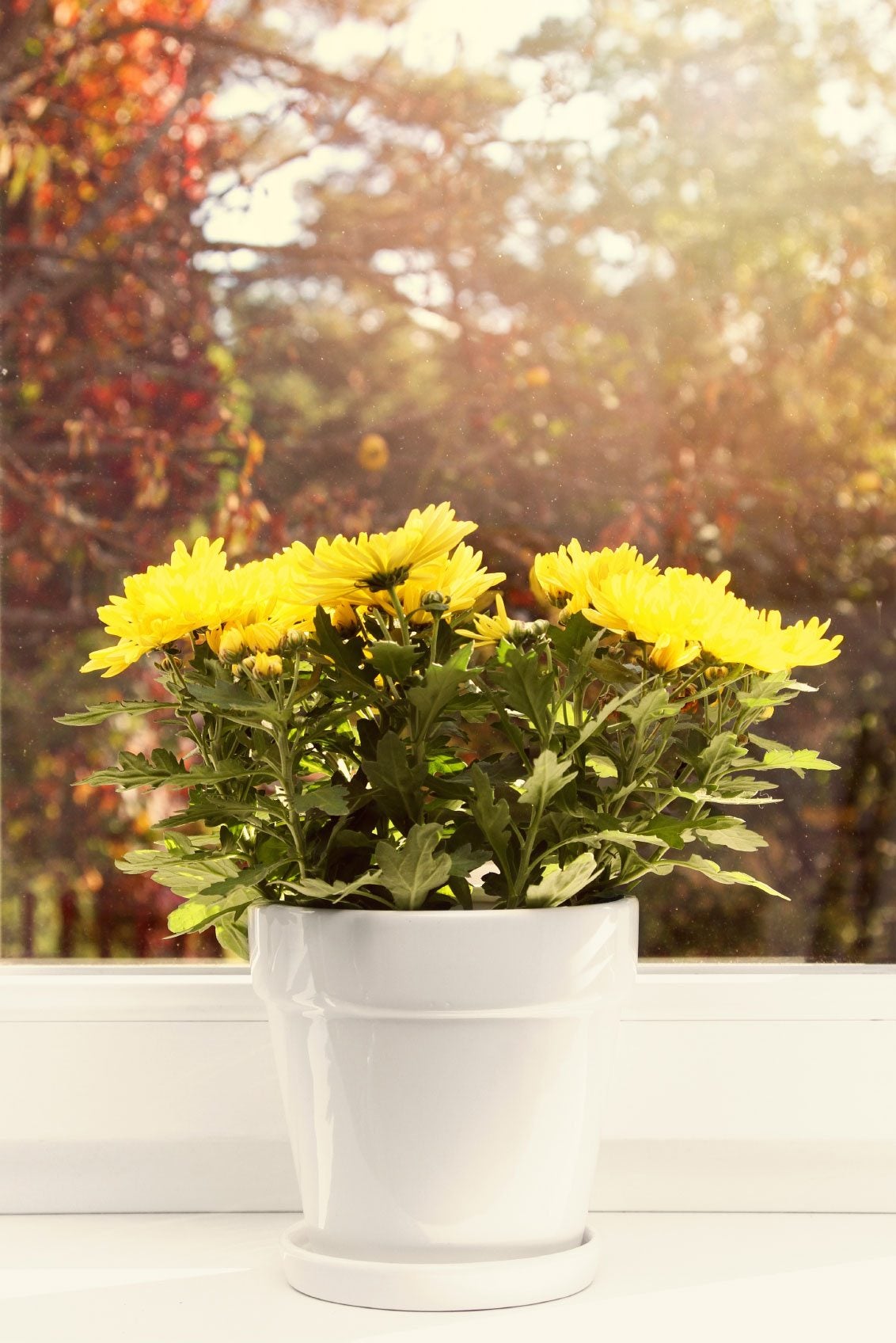Indoor Mum Care: Growing Chrysanthemums Indoors


Chrysanthemums are common gift plants and can be found as such year round. This is because they have been tricked into blooming by either hormones or manipulation of light exposure. Chrysanthemum houseplants require lower light to force blooms. They can be quite difficult to get to re-bloom in an interior setting, but in warmer climes they should be planted outside where they can get the appropriate lighting and resume their normal bloom schedule.
Potted mums are not the same as the hardy varieties that go into garden beds. They are more sensitive to cold and light changes, but you can find them any time of the year and bloom for several weeks in the home interior. Growing chrysanthemums indoors is easy and requires little special care beyond watering, good soil and drainage. Once the blooms are spent, you can keep the plant around for its deeply etched foliage.
How to Grow Mums Indoors
Mums are generally ready for interior growth at purchase. If the plant is pot bound, you can transplant it to a slightly bigger container, with good drainage holes and fresh houseplant soil. An important tip on how to grow mums indoors is to position your plant inside where it receives bright light during the day but isn't under a street or security light at night. Excess lighting can throw the plant's bloom production off and cause it to stop flowering.
Regular watering is a crucial part of indoor mum care. Water the plant from under the leaves to help prevent fungal issues when caring for container mums. Deadhead if you wish, to keep the plant looking its best. Keep chrysanthemum houseplants where they can receive good air circulation and avoid excess humidity.
In most cases, caring for container mums is a short lived project. This is because they flower for 3 to 4 weeks and then stop. Indoor conditions are not correct to force them to re-bloom and creating the correct conditions is a pain in the neck. For this reason, most indoor gardeners simply compost the plants after they are done flowering. This may seem heartless, but mums are relatively inexpensive and very easy to find.
The plant doesn't have much to offer after the flowers are done except some deeply notched foliage and a nice little bush shape. During the time you have it in your home, it shouldn't need feeding. If you wish to keep the plant around, do fertilize it in the growing season once per month with a soluble plant food and suspend feeding in the winter season.
Can You Keep Mums Inside Over Winter?
Obviously growing chrysanthemums indoors is possible, but the real question is will it flourish and bloom and, if not, what do we do with the plant? Each mum cultivar is slightly different but on average it takes 9 ½ hours to force buds and 10 ½ hours for flowers to form. Add to this a requirement of 60 degrees Fahrenheit (15 C.) for bud formation and 55 F. (12 C.) for flower development. Most households do not have the cooler temperature available nor do they want to live in the dark that long.
Sign up for the Gardening Know How newsletter today and receive a free copy of our e-book "How to Grow Delicious Tomatoes".
You can successfully keep a mum around the home all year long if you wish with very little attention beyond watering. A better option for anyone in temperate to warm zones (USDA zones 8 and above) is to plant the mum in the ground. The indoor plants are not terribly hardy but if you mulch the root zone the plant will probably live, re-sprout in spring and bloom in fall as an outdoor specimen.

Bonnie Grant is a professional landscaper with a Certification in Urban Gardening. She has been gardening and writing for 15 years. A former professional chef, she has a passion for edible landscaping.